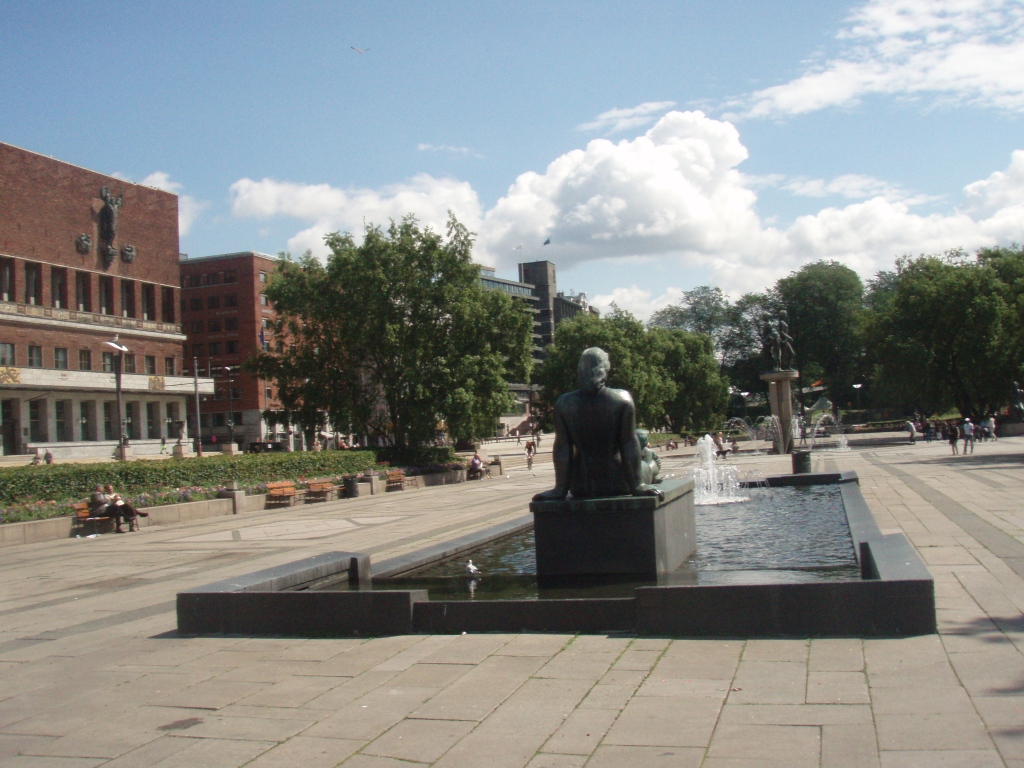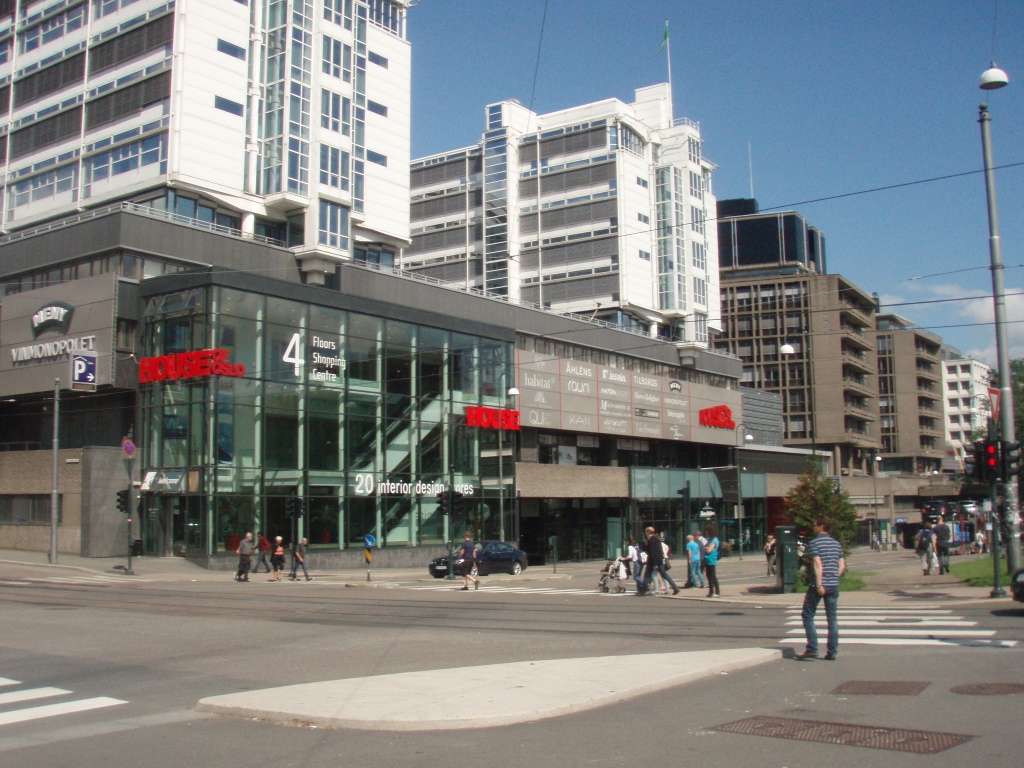OSLO, NORWAY – Oslo is the oldest of the Scandinavian capital cities. The name is derived from ‘As a Norse’ word for God, and ‘Lo’ meaning filled. The city what founded around 1048 by Harald Hardrada. His son Olav Kyrre, established a bishopric and build a cathedral here, thought the kings of Norway continued to live in Bergen – an oddly inefficient division of state and church, considering the difficulty of communication.
At the beginning of the 14th century, Hakon V consolidated its power by moving to Oslo, where he built fortress, known as Akershus fortress. Throughout the history there were up’s and down’s filled with catastrophic events, Danish rule followed by economic crisis until 1814, when Norway broke away from Denmark and united with Sweden. Norway achieved its independence in 1905 and got its original name after 1925.






Today city’s centre is largely the work of the late 19th and early 20th century with its wide streets, dignified parks and gardens, solid buildings and long classical vistas combine to lend it a self-sufficient convenient air.
In Oslo you get the feeling the inhabitants are proud of their wealthy city and of the rapid changes that are underway, notably and ambitious construction program and a fast-growing cultural life.
Oslo’s biggest draw is its museums, which cover a hugelly varied and stimulating range of topics. Thor Heyerdahl’s Kon-tiki museum, the fabulous Vicking Ship Museum, the Munch Museum ablaze with a good chunk of the painter’s work, the part devoted to the bronze and granite sculptures of Gustav Vigeland, and the moving historical documents of the Resistance Museum, are enough to keep you very busy for a few days.
There’s also a decent outdoor life, Oslo is enlivened by a good range of parks, pavement cafes, street entertainers and festivals. In summer, when virtually the whole population lives outdoors, the city is a real delight. It’s also worth visiting in winter, when it’s prime location amid heels and forests makes it a thriving and affordable ski centre.



If Oslo is your first taste of Norway, you’ll be struck by the light – soft and brilliantly clear in the summer and broadly gloomy in winter, each season visited by rafts of rain or chilling blizzards. The grand late 19th and early 20th century buildings of central Oslo suit the climate well, and provide the sense of security and prosperity that was so important to the emerging nation at the time of their construction, and is still a feature of the city today.
Most of downtown Oslo remains easy and pleasant to work around, a humming, good-natured kind of place whose airy streets and squares accommodate the appealing remnants looks of the city’s early days as well as a clutch of good museums and dozens of bars, cafes and restaurants.
From the jetty behind the ‘Radhus’ – City house, ferries shuttle southwest to the Bygdoy peninsula, home to the city’s showpiece museums, other ferries head south from the Vippetangen quay behind the Akershus to the string of rusticated islands that necklace the inner waters of the Oslofjord.


Back on the mainland, east Oslo is the least prepossessing part of town, a gritty sprawl housing the poorest of the city’s inhabitants. You wouldn’t come this way where it not for the Munch Museum, which boasts a superb collection of the artist’s work, thought afterwards it’s mildly tempting to pop along the eastern shore of Oslo’s principal harbour for the views over the city and to look at the skimpy remains of the medieval town. Northwest Oslo is far more prosperous, with big old houses lining the avenues immediately to the west of the Slottsparken. Beyond is the Frognerparken, a chunk of parkland where the stunning open-air sculptures of Gustav Vigeland are displayed in the Vigelandsparken.






Further west still, there is more prestigious modern art at the Henie-Onstad Kunstsenter, beyond the city limits in suburban Hovikodden. The city’s enormous reach becomes apparent only to the north of the centre in the Nordmarka. This massive forested wilderness, stretching far inland, is patterned, by hiking trails and cross country ski routes. Two T-bane lines provide ready access, clanking their way up into the rocky hills that herald the region. The more westerly grinds on past Holmenkollen, a ski resort where the ski jump makes a crooked finger on Oslo’s skyline, before continuing to the Frognerseteren terminus. Although the station is still within the municipal boundaries, the forested hills and lochs nearby feel anything but urban. Neighbouring Sognsvann, at the end of the other T-bane line, feels equally remote.
Despite the grand proportions of the Oslo conurbation, the city centre has stayed surprisingly compact, and is easy to navigate by remembering a few simple landmarks.
From the train station Oslo S, at the eastern end of the centre, the main thoroughfare and city artery Karl Johans gate heads directly up the hill pass the Domkirke and cutting a the pedestrianized course until it reaches the Stortinget – the Parliamentary building.




From here it sweeps down past University to Det Kongelige Slott – The Royal Palace, which sits in Parkland at the western end of the centre. South of the palace, on the waterfront, is the brash harbourside development of Aker Brygge, across from which is the distinctive twin- towered Radhus. Back towards Oslo S, on the lumpy peninsula overlooking the harbour, is the severe-looking Akershus castle. Between the castle, the Stortinget and Oslo S is a tight slightly gloomy grid of streets and high buildings that was originally laid out by Christian IV is the 17th century. Nowadays the district acts as the city’s commercial hub, though its importance is being undermined by Oslo’s burgeoning suburbs.
Other than the centre, the place you’re likely to spend most time in Oslo is the Bygdoy peninsula, across the bay to the southwest of the city, where 5 separate museums make-up an absorbing cultural and historical display, indeed, it’s well worth spending a full day or less wearyingly, two half-days here. The most enjoyable way to reach Bygdoy is by ferry. These leave from pier 3 behind The City Hall Rathus, departing and returning to a similar schedule. They have two ports of call on the peninsula the Dronningen and Bygdoynes piers, but note that they only follow one route.





The two most popular attraction the Viking ships and the Folk museums, are within easy walking distance of the Dronnningen pier, the other three are a stone’s throw from Bygdoynes.
The compact archipelago of low-lying, lighly, forested islands in the inner Oslofjord is the cities summer playground, and makes going to the beach a viable option for a European capital. Jumping on a ferry, attractive enough in the heat of the day, is also one of the more pleasant forms of entertainment during the evenings and, although most of the islets are cluttered summer homes, the least populated are favourite party venues for the city’s preening youth. Ferries to the Island leave from the Vippetangen quay, beside the grain silo at the foot of Akershusstranda a 20-minute walk or a 5-minute ride on bus #29 from Jernbanetorget.
Promotion:



Keywords: #Oslo #booking hotel in #travel destinations #viking #museums #coddy #urban escape games #escape game
Other simiar stories: Travel to Amsterdam Travel to Stockholm Travel to Oslo


🩵
LikeLike
We visited Oslo last year and you are right, there are a lot of great museums here. Unfortunately, the Kon Tiki museum was closed. Thank you for the nice descriptions and great information.
LikeLiked by 1 person
Glad you like the post. It’s a pity you haven’t got a chance to visit Kon -tiki museum. Maybe for another occasion. Oslo is wonderful!
LikeLiked by 2 people